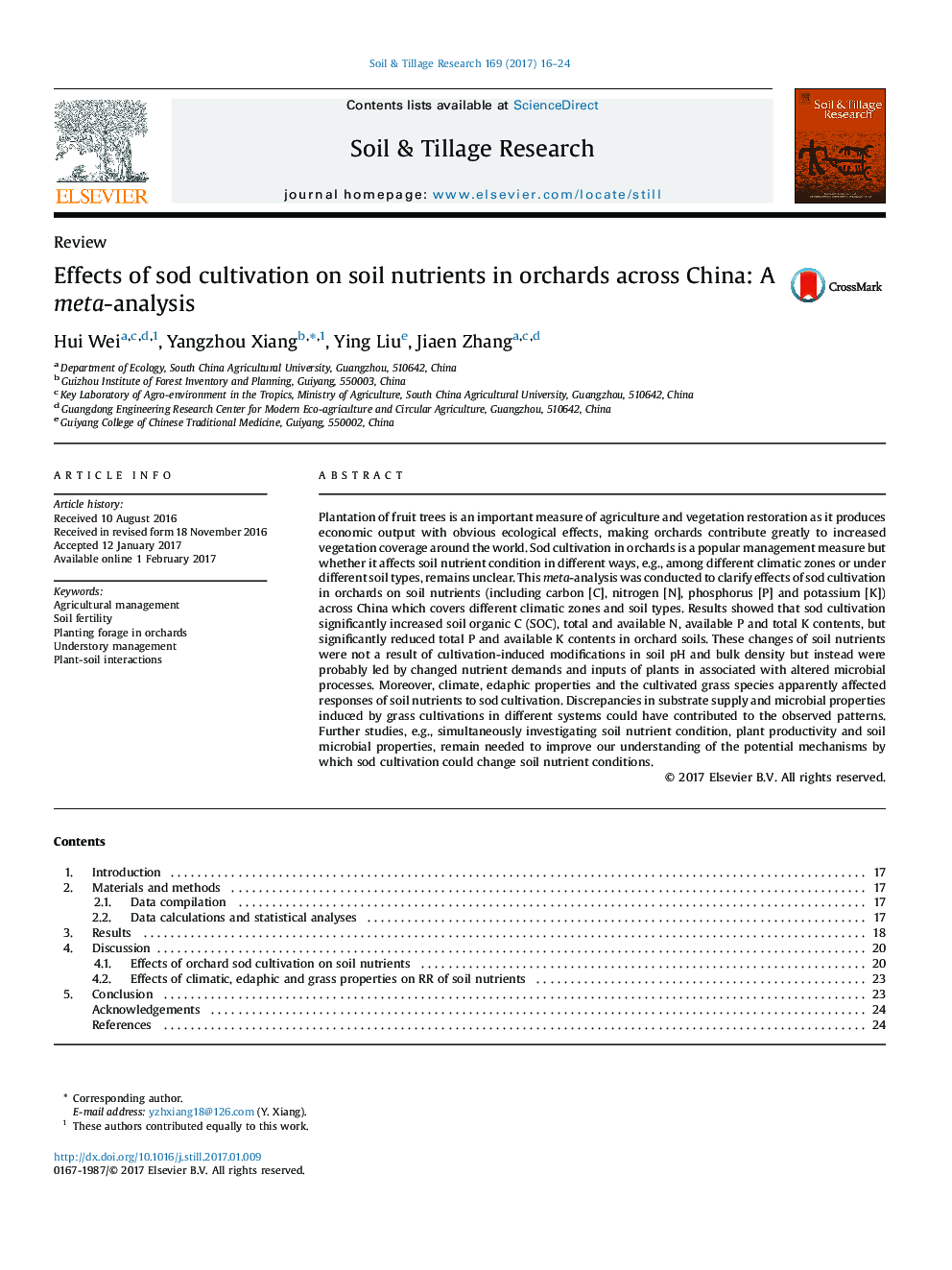| کد مقاله | کد نشریه | سال انتشار | مقاله انگلیسی | نسخه تمام متن |
|---|---|---|---|---|
| 4927570 | 1431834 | 2017 | 9 صفحه PDF | دانلود رایگان |
- Sod cultivation in orchards increased soil OC and total and available N contents.
- Sod cultivation increased soil available P but reduced total P in orchard soils.
- Sod cultivation increased soil total K but reduced available K in orchard soils.
- The patterns may be due to changed nutrient needs and inputs by plants to the soil.
- Climate, soil and grass type affected responses of soil nutrients to sod cultivation.
Plantation of fruit trees is an important measure of agriculture and vegetation restoration as it produces economic output with obvious ecological effects, making orchards contribute greatly to increased vegetation coverage around the world. Sod cultivation in orchards is a popular management measure but whether it affects soil nutrient condition in different ways, e.g., among different climatic zones or under different soil types, remains unclear. This meta-analysis was conducted to clarify effects of sod cultivation in orchards on soil nutrients (including carbon [C], nitrogen [N], phosphorus [P] and potassium [K]) across China which covers different climatic zones and soil types. Results showed that sod cultivation significantly increased soil organic C (SOC), total and available N, available P and total K contents, but significantly reduced total P and available K contents in orchard soils. These changes of soil nutrients were not a result of cultivation-induced modifications in soil pH and bulk density but instead were probably led by changed nutrient demands and inputs of plants in associated with altered microbial processes. Moreover, climate, edaphic properties and the cultivated grass species apparently affected responses of soil nutrients to sod cultivation. Discrepancies in substrate supply and microbial properties induced by grass cultivations in different systems could have contributed to the observed patterns. Further studies, e.g., simultaneously investigating soil nutrient condition, plant productivity and soil microbial properties, remain needed to improve our understanding of the potential mechanisms by which sod cultivation could change soil nutrient conditions.
Journal: Soil and Tillage Research - Volume 169, June 2017, Pages 16-24
